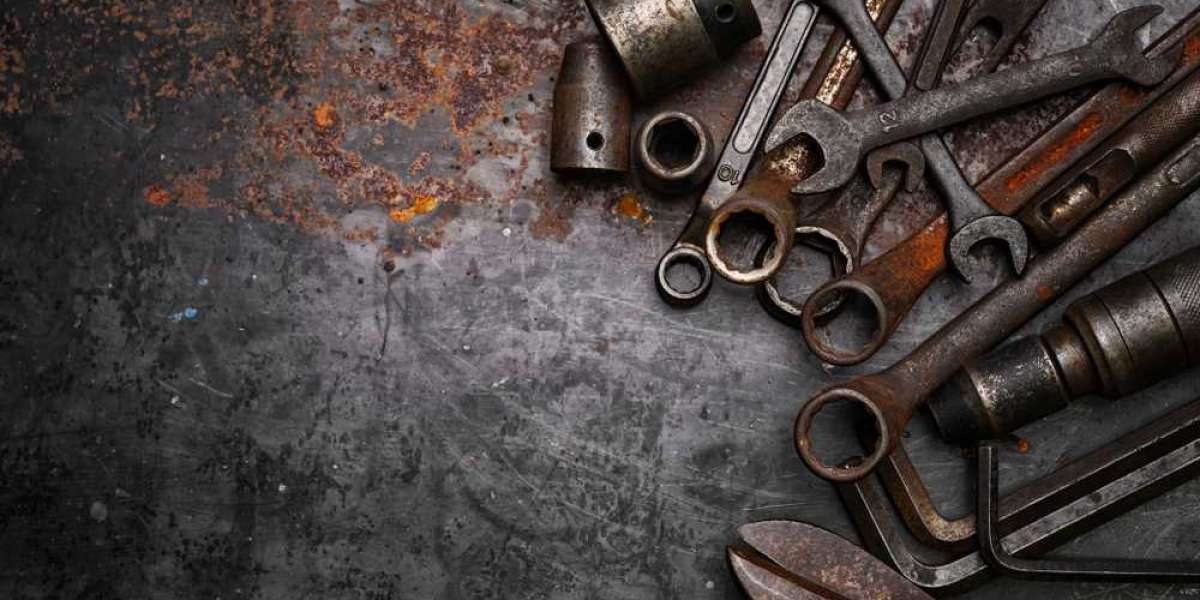Introduction
Rust is a familiar nemesis for many homeowners, auto enthusiasts, and businesses. It has the potential to transform prized goods into unattractive decayed relics, as well as severely reduce the lifespan of metallic structures and machinery.
Fortunately, developments in rust removal technologies have made combating this problem easier than ever.
In this blog, we'll look at the most recent advances in rust removal technology, allowing you to understand the most effective treatments available today.
Understanding Rust and its Impact
Before we get into the advances, it's important to understand what rust is. Rust is a form of corrosion caused by iron or its alloys reacting with oxygen and moisture in the atmosphere.
This reaction produces iron oxide, popularly known as rust, which not only degrades the appearance of metal surfaces but also weakens structural integrity over time. As a result, prompt rust removal is critical to preserving the value and usefulness of metal things.
1. Laser Rust Removal
One of the most interesting advances in rust removal technology is the use of lasers. Laser rust removal is a cutting-edge process that uses high-powered lasers to melt rust while preserving the underlying metal. This approach is incredibly efficient and environmentally friendly because it does not use chemicals or abrasives.
Benefits:
- Precision: Lasers can precisely target specific locations, making them excellent for complicated parts or sensitive surfaces.
- Speed: Laser rust removal is faster than traditional methods, resulting in less downtime for repairs.
- Environmentally friendly: This approach generates little trash and contains no dangerous elements.
2. Ultrasonic Cleaning Systems
Ultrasonic cleaning is another novel way to rust removal that is gaining favor. This approach generates small bubbles in a liquid solution by using high-frequency sound waves. When these bubbles implode, they generate high pressure and temperatures, efficiently removing rust and impurities from metal surfaces.
Benefits:
- Thorough Cleaning: Ultrasonic cleaners can clean delicate forms and crevices that other methods may miss.
- Versatile Applications: This technique is widely employed in a variety of products, including automotive parts, jewelry, and sensitive machinery.
- Non-Destructive: Ultrasonic cleaning is gentle on materials, preserving the integrity of the metal.
3. Chemical Innovations
While traditional chemical rust removers have been used for many years, recent advances have resulted in the development of more effective and safer formulas. Modern rust removers frequently contain phosphoric acid, which turns rust into a protective layer, making it easier to paint over the treated surface.
Benefits:
- Effective: These compounds penetrate rust layers fast and efficiently.
- User-Friendly: Many new formulations are available in easy-to-apply gel forms, which provide greater control and less mess.
- Preventive Action: Some products now include additives that not only eliminate rust, but also aid to prevent further corrosion.
4. Electrolytic Rust Removal
Electrolytic rust removal is a novel approach that employs electrical current to remove rust from metal items. Rust is removed from an item by immersing it in a solution and applying a low-voltage electrical charge to a sacrificial electrode.
Benefits:
- Non-Toxic: This method does not employ harsh chemicals, making it safer for both people and the environment.
- Preserving the Original Finish: Electrolytic removal is less abrasive and preserves the metal's original polish.
- Cost-effective: Because it does not alter the appearance of the item, this procedure is very useful when restoring antiques.
5. Robotics for Industrial Applications
In industrial settings, robots are becoming an indispensable tool for rust removal. Robotic systems can be trained to clean huge metal surfaces like ship hulls or industrial tanks, resulting in consistent and efficient rust removal.
Benefits:
- Increased Efficiency: Robots can operate continuously, lowering labor expenses and increasing output.
- Safety: Using robots reduces human exposure to hazardous working circumstances, particularly in enclosed places.
- Precision and Consistency: Robots produce consistent results, providing high-quality finishes every time.
Conclusion
The way we handle this persistent problem is changing as a result of innovations in rust removal technologies. Laser and ultrasonic cleaning, sophisticated chemical formulations, and robotic systems are among the more effective and environmentally friendly methods available today. As these technologies advance, they promise to make rust removal more convenient and efficient for everyone.
Whether you're a household hoping to restore a prized piece or a business looking to maintain equipment, staying up to date on these advancements will help you select the best rust removal solutions for your needs. Embracing these innovations not only safeguards your money, but also helps to create a more sustainable future.






